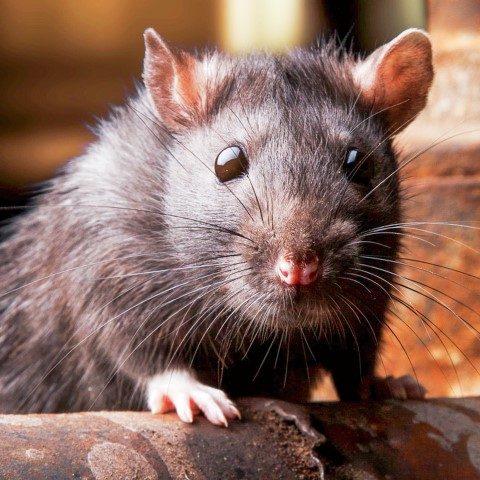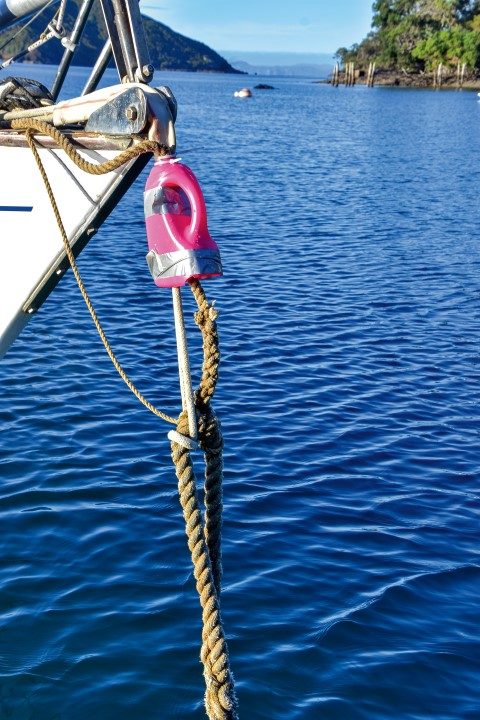

Furry things that scurry in the night can be a boating nightmare. Lindsay Wright asks how do you tackle a seafaring rodent?
Seafarers used to refer to anyone who had worked their way up from the deck to the skipper’s chair on the bridge as having ‘come up through the hawsepipe.’ The rat which colonised our yacht, Southern Cross, took the same route up the mooring line, but she wasn’t after the skipper’s job – all she wanted was a warm, dry home for winter.
We were away when it swam the 60m from the shoreline, clambered up the mooring rope and, presumably, scuttled furtively around the deck looking for a way inside.
I can imagine its beady little eyes lighting up when it spotted the 10mm gap where we’d left the forward hatch ajar to ventilate the boat, and her whiskers frantically twitching as it got a hint of the warm, appetising air inside.
It must have squeezed through the gap, plopped into the dark void inside the boat with all its senses on full alert, ready to flee at the slightest threat. Judging by the scattering of hard black droppings, it’d spent some time on the vee berth forward – I felt a bit like Papa Bear from the fairy tale – “Who’s been sleeping in MY bed?”
Perhaps it had slept off the swim there – and after it’d rested – the entire boat and tasty troves of food were hers for the nibbling. Southern Cross is constructed of three-skin kauri with full-length stringers inside, so every bulkhead and locker has a 25mm gap between it and the hull. Perfect access for a hungry rodent.

Almost every pack of dried goods – rice, oats, Weetbix, flour, milk powder, couscous, macaroni and coffee – had a corner nibbled and there wasn’t a flat surface on board that didn’t have a tell-tale scattering of rat poo.
A small stuffed toy, gifted to us by a friend, had been eviscerated and the stuffing strewn throughout the boat, which made us think that the rat was a pregnant female in search of nest making material.
She’d only been on board a couple of days when the people who were looking after the boat climbed on board to check the bilges and found the devastation. “I set a trap that night and caught it straight away,” Tony reported. “It was a big one.”
Within a week or so we returned and continued the cleanup job he and Carol had started. Small piles of black excrement were everywhere, including the toilet which made us think that the dried food diet had driven our unwanted tenant to drinking saltwater from the head.

Despite the devastation the rodent had created, I couldn’t help but respect the li’l critter. It had swum what would be for a human, the equivalent of a couple of triathlons (they’ve been known to swim up to 500m) then clambered two metres up a slimy rope and squeezed through a gap hardly big enough to fit my forefinger.
It just happened to be the wrong species – if it was one of us, it would have been a Special Forces instructor or an Outward Bound tutor.
But then I considered the formidable damage a predator like that could do to the fauna and flora on our offshore islands – Maud island, Rangitoto, Tiritiri Matangi, the sub-Antarctics and others. A formidable omnivore that can swim, climb and outrun most native animals; that would eat birds’ eggs, fledglings, skinks, frogs, snails, weta and lizards (or tuatara).
Rats are grazers – they eat twice a night and consume about 10% of their body weight. The three species found in New Zealand are the aptly named ship rat (Rattus rattus, common rat), Norwegian rat (Rattus norvegicus, brown rat) and the humble kiore (Rattus exulans), sometimes known as the Polynesian rat.
Of the three, ship rats are the most widespread and grow to about 225mm long. These nasty little opportunists are accomplished climbers and are generally found in trees but also inhabit buildings and boats.
A pair of breeding rats can have litters of 22 young – though eight to nine is the norm. A group of rats is called a ‘mischief’, and, at that rate, you’d have a mischief in no time. Most of the rat species live outdoors but prowl around in autumn looking for warm, dry winter accommodation.
One boat owner reported a similar rodent on board the boat he keeps in a central Auckland marina. His theory was that it was attracted by nearby rubbish bins and scurried down the dock for a post-prandial snooze – and nipped through the first open hatch it came to.
On another occasion, I was on a boat tied across the dock from a Taiwanese long-liner in Papeete. At night we sat in our wheelhouse and watched the rats hurrying along the fishing boat gunwales. One night I went aboard their boat for a nip of brandy and, as we turned the galley lights on, a dozen or so rats scuttled away to their hiding places. I was aghast – but the Taiwanese hardly seemed to notice. When they sailed we trapped six rats, in close succession, on the first night.

Traps are most effective for ridding your boat of rats.
A big old Baltic trader running around the Caribbean had a rat explosion aboard and her crew were jubilant after intensive poisoning had put an end to the noise of rats running around all night. But they had a dozen dead rats slowly rotting away in as many inaccessible places within the boat. It smelt like a mass burial ground for months.
We’ve since fastened a rat guard – an inverted bleach bottle – to our mooring line and we close all the hatches when we’re away. But before you sail for anywhere near an offshore island it’s a good idea to try setting traps on board for a few days beforehand. Most local councils, or DOC, will give advice and sometimes even free traps.

Perhaps it’s a genetic memory but a collective dread of rats is buried deep in our psyche. Maybe we remember the rat hordes that spread the bubonic plague which killed thousands of people in Europe during the Middle Ages, and which are nimble enough to run up legs and sink their yellow incisors into your nether regions.
I still shudder when I recall the old Adventures of Marco Polo movie that featured a throng of red eyed, squeaking rodents chasing the hero through an underground Venetian water pipe.
Best leave them on the mainland.
PLAGUED
Rat-borne fleas spread the ‘Black Plague’ – bubonic plague – which killed between 75 and 200 million people in Europe from 1347 to 1351. The number of Asian mortalities is unknown but it’s thought the plague killed 15% of the planet’s human population at the time.

An early symptom of the bubonic virus in humans was sneezing – which is why we still say ‘Bless You’ to this day when someone sneezes.
Campbell Island, in the New Zealand sub-Antarctic, was infested by Norway rats which had annihilated several bird and insect species. Meteorologists stationed there told of rats eating their hair while they slept and eating the socks out of their gumboots.
A massive air drop of poisonous bait eradicated the rats in 2001 and earned New Zealand a huge international reputation for offshore island pest riddance.




